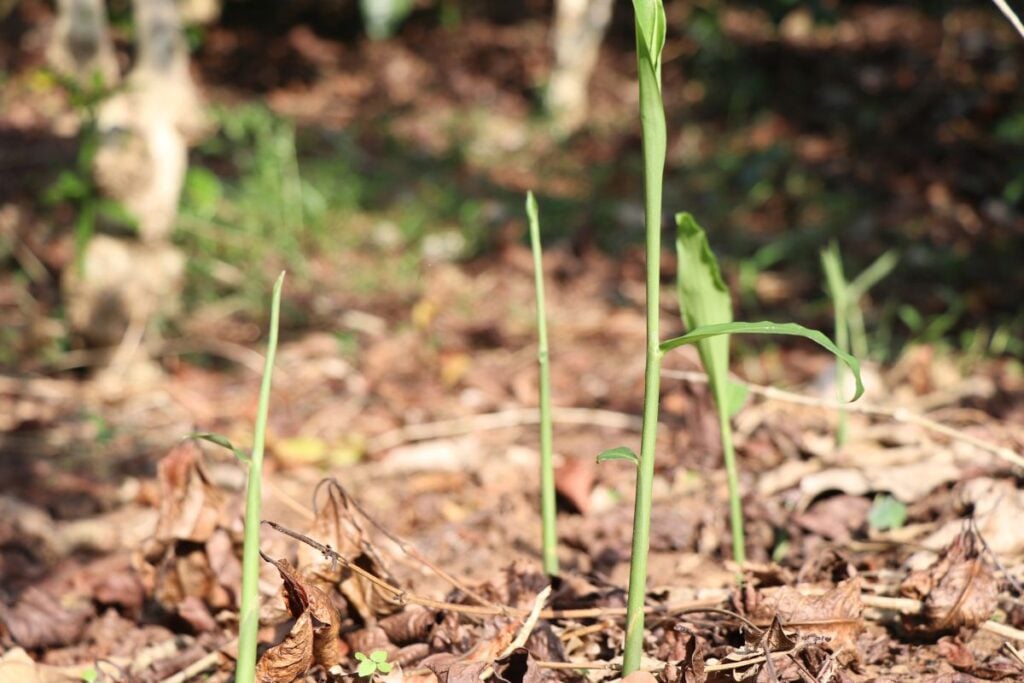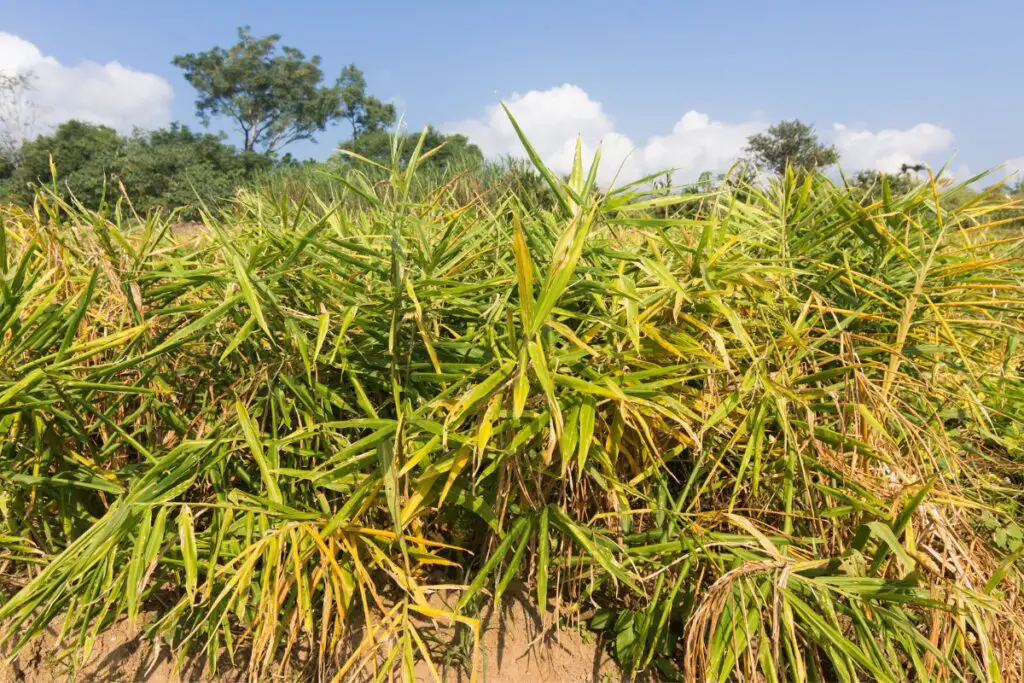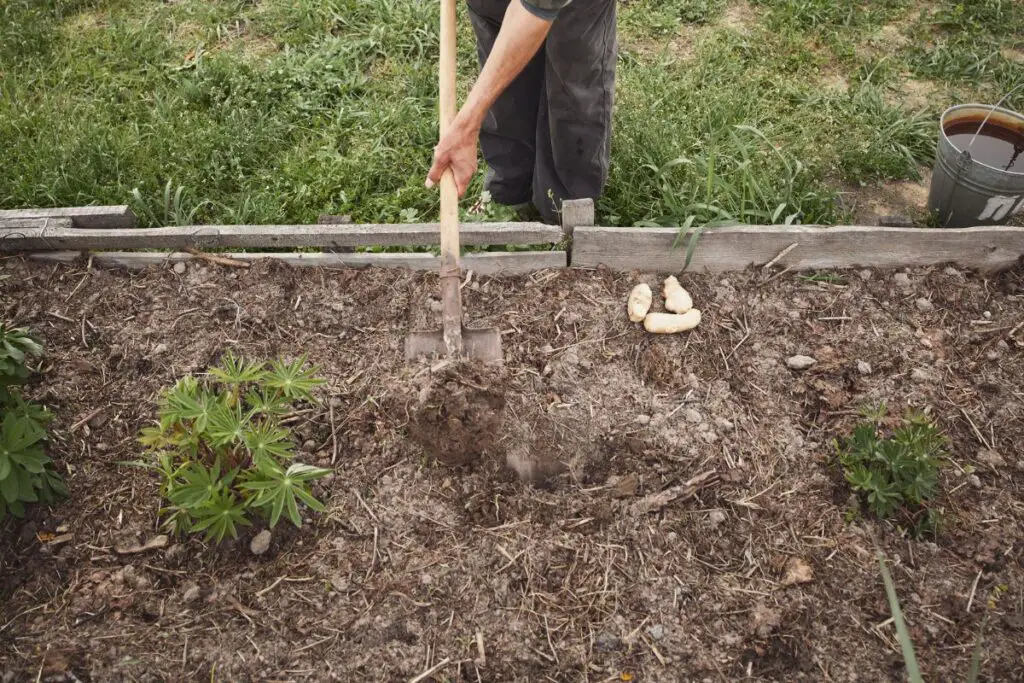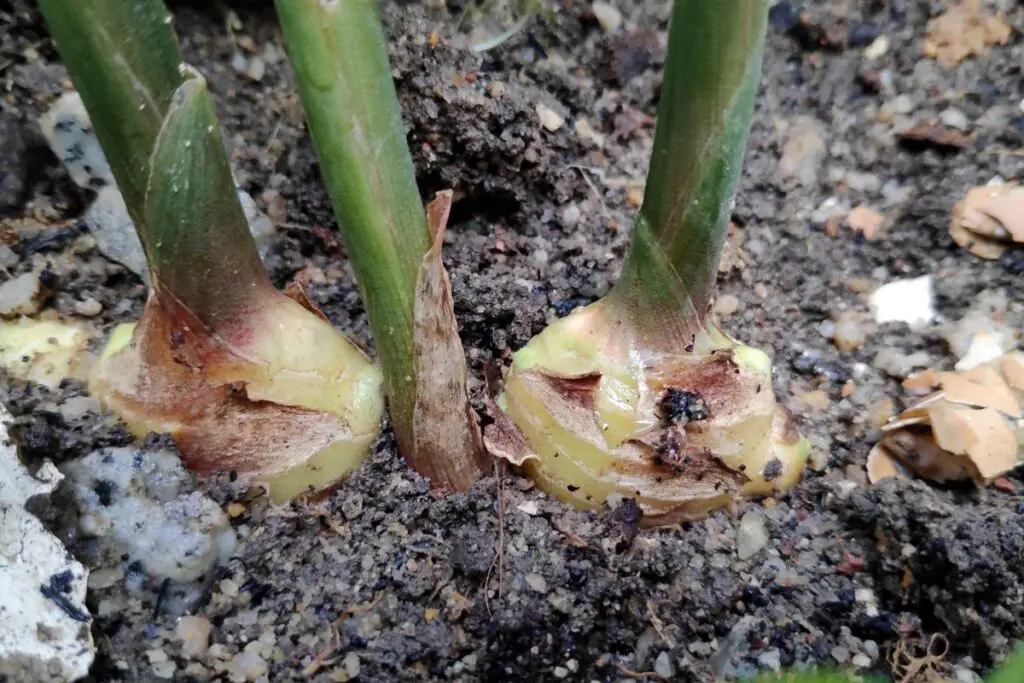Ginger plants have been used long since for culinary and medicinal purposes. Growing them is quite fun and exciting. But before that, you need to know the temperature tolerance of ginger plants. Are they ideal for growing in different temperature ranges? Let’s find out.
Being native to temperate climates, Ginger grows best when the temperature remains warm, around 75-85°F. However, ginger plants are not very cold-hardy or frost-tolerant, so temperatures below 50-60°F will hurt them badly, resulting in crop damage and poor harvest.
Soil temperature is the most important thing. As long as it is warm, you can plant ginger anywhere and anytime. To have thorough knowledge about the temperature tolerance of ginger, read this article till the end.

What is the best temperature for growing ginger?
Ginger plants are flowering plants, but they are grown for the rhizomes to use in cooking and for health benefits.
Since they belong to the tropical and subtropical areas, they grow best at temperatures of 75-85°F or above.
Temperatures below 55-60°F will hurt the rhizomes and even kill them.
The mild cold snap is fine, but a severe snap damages the cells of the rhizomes and kills them.
The most important fact about the temperature is the soil temperature.
Ginger grows best when the soil temperature is around 75°F.
Though the ginger plants can tolerate some low temperatures in the air, no ginger can handle excessive low temperatures in the soil.
It is always recommended to take the plant inside before the soil gets cold and freezes.
Ginger can tolerate high temperatures, but they do not need excessively high temperatures.
They must always be guarded against direct sunlight and kept under filtered sunlight.
How hot is too hot for the ginger plants?

Ginger plants are extremely hot tolerant plants.
Belonging to tropical areas, ginger plants need temperatures of around 75-85°F or even above to develop well.
You can and must always grow ginger in hotter climates.
The ideal zones for ginger plants are 7-12.
These areas can give ginger the perfect warmth for adequate growth and development of the rhizomes.
But the extreme heated temperature can affect their health, especially if they are exposed to the full sun in the summer afternoons.
They will wilt and die if they receive such heated temperatures.
If you live in hotter climates, you can grow ginger outside throughout the year.
But, it would be best if you don’t plant them in an open garden that remains always drenched with direct sunlight.
How will ginger react to extremely hot temperatures?
Since the ginger plants enjoy warm weather, they will fortunately not react too much to high temperatures.
Ginger has a great tolerance for heat and warmth, and they grow better in warm temperatures.
But, they will react if they receive the extreme heat of the sunlight.
Though ginger plants are tropical plants and like to have hot and humid conditions around them, they cannot endure extreme heat from the sun.
The high heat of the direct sunlight makes them dry and results in prolonged droughts and brown and wilted leaves.
Ginger will also react negatively and show signs like discolored and dry leaves if the conditions are very dry.
Dry weather can dry up the soil very quickly.
If you don’t water the plant well, the leaves will become brown or yellow, dry, and papery.
Looking for gardening supplies? We have tested 100's of products before recommending them to you guys. Check out our best pick below:
| Image | Gardening Supplies | Best Price? |
|---|---|---|
 Top
Top Top
Top | Raised Garden Bed Kit | Check On Amazon |
 | XLUX Soil Moisture Meter, Plant Water Monitor, Soil Hygrometer Sensor for Gardening, Farming, Indoor and Outdoor Plants, No Batteries Required | No Results |
 Top
Top Top
Top | 82 Pcs Garden Tools Set and Extra Succulent Tools Set | Check On Amazon |
 | Joeys Garden Expandable Garden Hose with 8 Function Hose Nozzle, Lightweight Anti-Kink Flexible Garden Hoses, Extra Strength Fabric with Double Latex Core, (50 FT, Black) | No Results |
 Top
Top Top
Top | Dual Chamber Compost Tumbler | Check On Amazon |
 Top
Top Top
Top | Sunnyglade Plant Stakes | Check On Amazon |
 Top
Top Top
Top | Organic Cold Pressed Neem Seed Oil | Check On Amazon |
 Top
Top Top
Top | Mighty Mint Gallon :-Insect and Pest Control Peppermint Oil | Check On Amazon |
 Top
Top Top
Top | Scotts DiseaseEx Lawn Fungicide | Check On Amazon |
 Top
Top Top
Top | Jacks Classic 20-20-20 All Purpose Fertilizer | Check On Amazon |
 Top
Top Top
Top | 30,000 Seeds Pollinator Attracting Wildflower Mixture | Check On Amazon |
 Top
Top Top
Top | Survival Vegetable Seeds Garden Kit-Over 16,000 Seeds | Check On Amazon |
How to protect ginger plants?

High temperatures are not a real problem for the ginger plants, except it is not very hot and dry.
Water the ginger plant more frequently to maintain the soil’s moisture consistency if the weather is extremely hot and dry.
Ginger requires a lot of moisture to stay and grow well.
The moisture content has to be around 60%.
Planting them where they get only filtered or dappled sunlight is better.
Extreme sunlight dries up the rhizomes and the soil faster.
If you don’t water them well, the plant may experience prolonged drought conditions and die.
If the weather is extremely hot and dry, increase the watering frequency.
Check the soil and water the plant whenever the soil surface feels dry.
The more water it receives, the moister it will stay.
Watering will keep the plant cool if the hot temperature is too much for gingers to handle.
How cold can ginger plants tolerate?
Though ginger plants are easy to grow, they are not very cold-tolerant.
They enjoy warm and hot temperatures but detest cold temperatures.
Ginger will start reacting negatively once the temperature starts to drop below 50°F.
The minimum temperature tolerance of the ginger plants is 60-68°F.
However, some cold-hardy gingers can tolerate temperatures as low as 10°F, for example, Canada Wild, Japanese, Mango, etc.
But, they should still require some protection during the cold weather.
Otherwise, the plant may die.
An important factor when it comes to temperature is soil temperature.
Along with the air, the soil is also essential.
The soil temperature must be warm enough, around 70-75°F, for planting ginger.
When the soil temperature drops below 60°F, you must take precautions and transfer the plants indoors.
Effects of cold temperatures on ginger
When ginger plants are exposed to temperatures lower than 50-60°F, the plant will show some symptoms, for example:
- The leaves turn yellow and dry
- Leaves wither and die
- The rhizome size reduces
- The rhizome dies because the cells get damaged
Some gingers may tolerate a quick or mild cold snap, but no ginger can tolerate extremely frosty weather.
Whenever the temperature drops by 5°F, the gingers will begin to rot and die.
A mild frost is also fine for gingers as you can revive it with proper care and maintenance.
But, if ginger continues to get exposed to frost, it will die.
How do I protect my ginger plant in the winter?

If you want the ginger plants to remain healthy throughout the winter season, you should take the following steps:
In colder zones
- Grow ginger in pots so that you can shift them indoors in winter
- Keep them near a sunny window.
- Go easy on watering to maintain moist soil.
- Do not fertilize your plant.
- If you must give them nutrients, add some mulch. It will protect the roots and prevent moisture evaporation; when it breaks down, it adds nutrients to the soil.
- Use LED lights to give them enough warmth.
- Dig up the bulbs, store them in a dry, dark, and cool place, and replant them in the next season.
- Grow ginger in high tunnels or glasshouses.
In hotter climates
If you are from areas with hot climates, you can grow them outside throughout the year.
For overwinter ginger:
- Add a layer of mulch to protect them from cold weather.
- Let the plants have some direct sun for 2-3 hours.
- Reduce or stop watering and fertilizing.
- You may harvest the whole plant in the fall before winter enters.
Also read: How To Protect Ginger Plant In Winter?
Can I grow ginger in cold climates?
You can grow ginger in colder climates, but you must start with pots.
It allows you to take the plants indoors when winter arrives and the temperature drops below 50°F.
You can’t be late to plant ginger because it will already take one year to reach maturity.
If you are late, you have to harvest late.
But, the plant may face some challenges:
- The plant grows a little slower than those in hotter climates. So, the plant may or may not flower. You have to ensure they get 2-5 hours of sun daily.
- The soil temperature is more important. As long as it stays around 75°F, you can grow ginger in the ground. Else, grow them in pots.
- Since the region has cold climates throughout the year, the plant takes one year to mature and harvest. So, you have to wait until the next season to harvest them.
- Some bug activities increase more in cold climates.
You may grow some cold-hardy plants like:
- Japanese ginger
- Mango ginger
- Canada wild ginger
- Crepe ginger
- Thai ginger
Can ginger be left in the ground over winter?
Suppose you reside at a place where the temperature drops below 50°F every winter.
In that case, you must not leave ginger rhizomes outside in the ground.
It is the best idea to grow them in pots.
It makes the transfer from outdoor to indoors easier.
Otherwise, you must remove the vegetation above the soil, store them in dry peat, and keep them in a dark and cool location.
Since these rhizomes have to stay dormant, make sure the rhizomes don’t begin sprouting.
But if your region rarely crosses 60°F, you can leave the ginger rhizomes in the ground.
Just add a layer of mulch and avoid fertilizing. Keep an eye on the plants to watch out for pests.
Will ginger come back after winter?

The ginger plants will only return if they have received mild cold injury.
But, you must bring them inside immediately after observing some initial signs.
When winter comes, the rhizomes become dormant to store the energy and use it in the coming season.
A cold injury interferes in this storage and hurts the ginger roots.
For this, these rhizomes fail to sprout out in the next growing season.
So, the best step to bring ginger back after winter is to protect them in winter either by bringing them inside or storing the rhizomes in a dark and cool place.
But, if the damage is very high, a comeback is difficult or impossible.
Final thoughts
The best temperature for ginger plants is between 75-85°F. High temperatures are not a big problem for the ginger plants, except the weather isn’t very dry.
Water the plant more frequently if the temperature is very high so the soil remains moist, and the plant stays cool. Otherwise, the ginger plants will love and thrive around warm temperatures and even enjoy it above 85°F.
On the contrary, cold temperatures are no friend to the ginger plants. Temperature below 50-60°F, and ginger will begin to suffer. In worst cases, the rhizomes will rot, and the plant will wither and die.
Protect ginger from winter by growing them in pots. Take the pot inside or dig up the rhizomes from the ground to store them in a dark, dry, and cool place. Grow some cold-hardy if you are from colder zones, like Japanese, Mango, etc.
Reference: Ginger Production, Texas AgriLife Extension, USDA, Wikipedia
